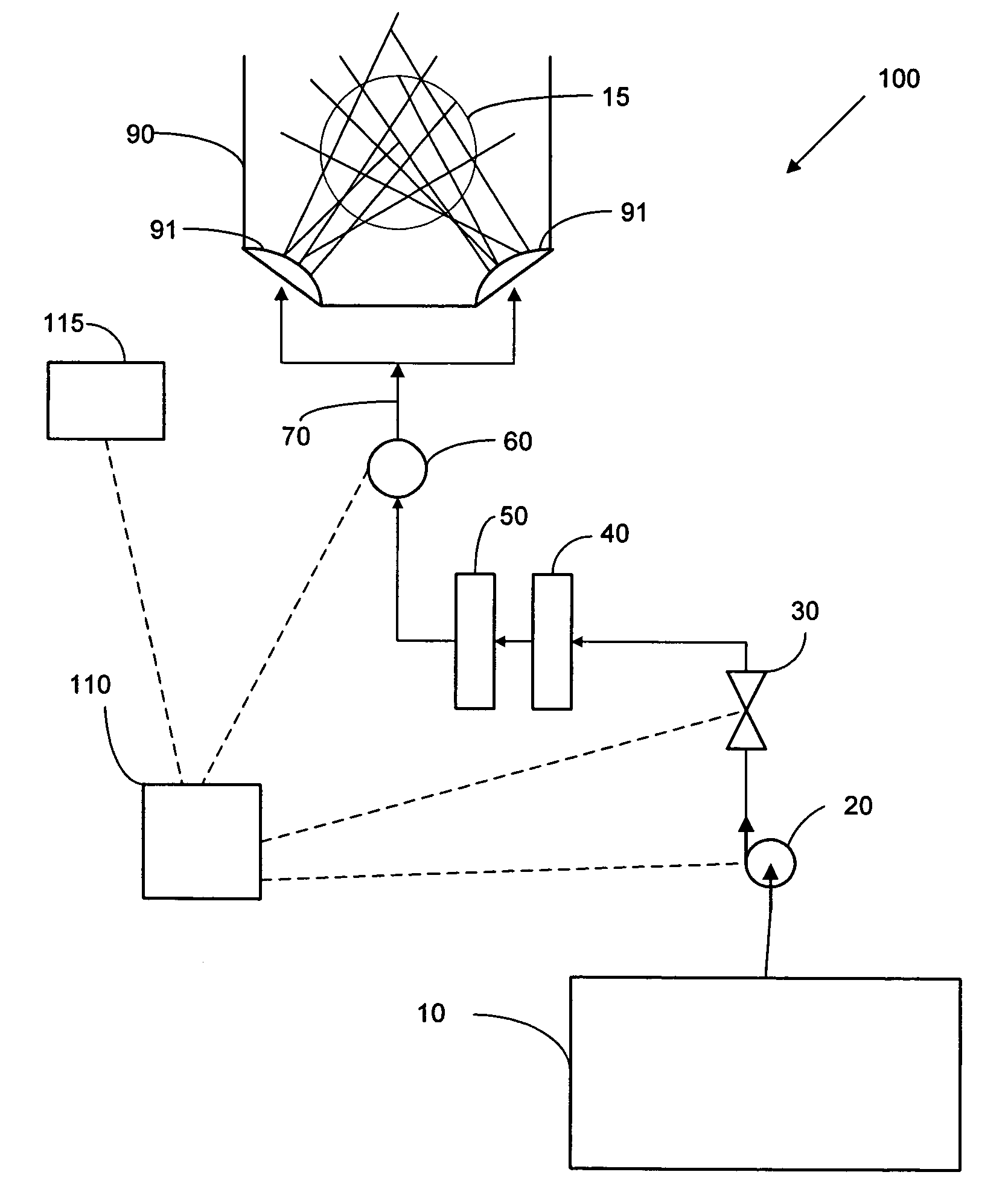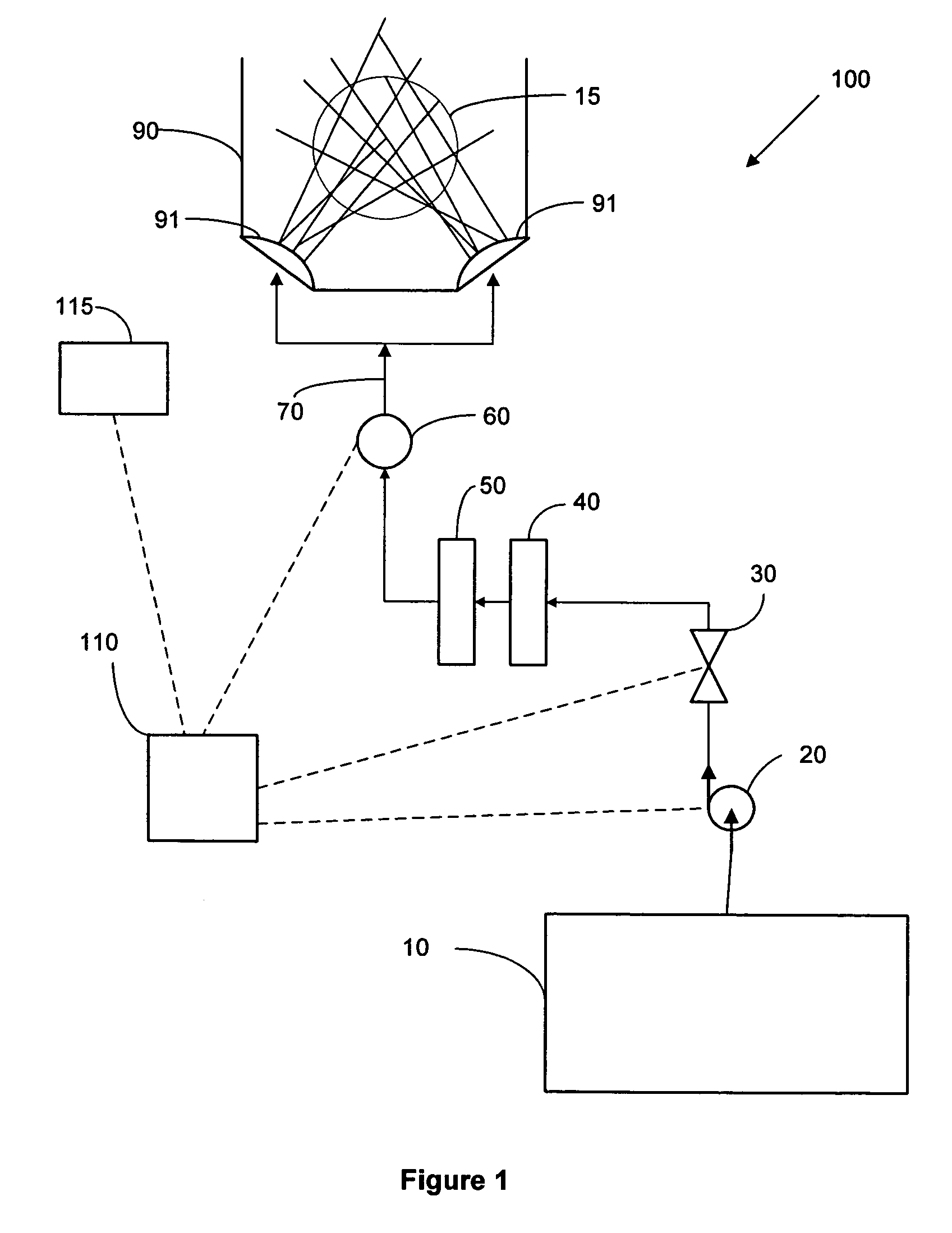System and method for point-of-use filtration and purification of fluids used in substrate processing
a technology of point-of-use filtration and purification of fluids used in substrate processing, which is applied in the direction of filtration separation, multi-stage water/sewage treatment, separation process, etc., can solve the problems of increasing the probability of device failure, contaminating particle or impurity on a wafer occupying a greater percentage of the device's surface area, and increasing the likelihood of device failure, etc., to reduce or eliminate particles and/or ionic impurities in fluid
- Summary
- Abstract
- Description
- Claims
- Application Information
AI Technical Summary
Benefits of technology
Problems solved by technology
Method used
Image
Examples
Embodiment Construction
[0045]FIG. 1 illustrates a schematic of point-of-use filtration and purification (“POUFP”) rinse system 100 in accordance with an embodiment of the present invention. While the system (and method) are described in detail with respect to a semiconductor DI water rinsing system, the invention is not so limited. The inventive system and method can be used to filter and purify any type of fluid that is used to process substrates, including but not limited to chemicals, acids, liquid-liquid mixtures, diluted chemistries, and liquid-gas solutions. The system and method is also not limited to supplying ultra-pure fluid for semiconductor wafer processing but can be used with any type of substrate processing where ultra-pure fluid is desired, such as the manufacture of raw wafers, lead frames, medical devices, disks and heads, flat panel displays, microelectronic masks, and other applications requiring high purity fluids for processing.
[0046]POUFP rinse system 100 comprises DI water reservoi...
PUM
| Property | Measurement | Unit |
|---|---|---|
| size | aaaaa | aaaaa |
| sizes | aaaaa | aaaaa |
| sizes | aaaaa | aaaaa |
Abstract
Description
Claims
Application Information
 Login to View More
Login to View More - R&D
- Intellectual Property
- Life Sciences
- Materials
- Tech Scout
- Unparalleled Data Quality
- Higher Quality Content
- 60% Fewer Hallucinations
Browse by: Latest US Patents, China's latest patents, Technical Efficacy Thesaurus, Application Domain, Technology Topic, Popular Technical Reports.
© 2025 PatSnap. All rights reserved.Legal|Privacy policy|Modern Slavery Act Transparency Statement|Sitemap|About US| Contact US: help@patsnap.com



